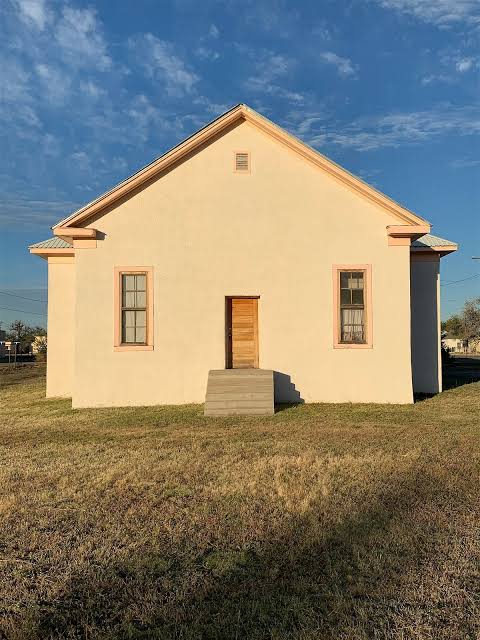Blackwell School: A New National Historic Site Tells the Story of How Schools Were Segregated in the US
The Blackwell School in Marfa, Texas, looks like a simple one-story house at first glance. The building has off-white clay walls, a metal roof, two narrow vertical windows, and a wooden door. It is set in an empty lot in this dry West Texas town. Its entry is reached by a short set of steps without handrails. This building has an interesting history that has won it a spot in the US National Park system, even though it doesn’t look like much.

The Blackwell School was made a National Historic Site by Secretary of the Interior Deb Haaland on Wednesday. According to a news release from the National Park Service (NPS), Blackwell School is now one of only 76 places to have been given this prestigious title. Along with the Eleanor Roosevelt National Historic Site in New York, Ford’s Theatre National Historic Site in Washington, DC, and the Tuskegee Airmen National Historic Site in Alabama, this site is also important to history.
When you visit the Blackwell School, it’s hard not to think about the time when schools in the United States were separated. The Blackwell School was the only school for Mexican American kids from the time it opened in 1909 until the Marfa schools became mixed in 1965. There was a lot of segregation during this time, and minority students often didn’t have the same access to educational tools as their white peers.
By making Blackwell School a National Historic Site, the stories of the people who went to and taught there will be kept alive and told to future generations. To show how strong and determined the Mexican American community in Marfa is, this monument shows their battles and victories over systemic racism.
The fact that the Blackwell School is a National Historic Site shows how important it is to American history as a whole. It is an important educational tool that helps people understand how segregation affected communities and how the fight for civil rights and freedom is still going on. The National Park Service (NPS) helps everyone learn more about the country’s history by protecting these kinds of places.
The number of units controlled by the US National Park Service now stands at 430, with 63 of them being National Parks. The National Park Service’s job is to protect these places’ natural and cultural resources so that people can enjoy them, learn from them, and be inspired by them. The fact that the Blackwell School is on this prestigious list shows how important it is to preserve cultural and historical heritage, making sure that important stories like the Blackwell School’s are never lost.

Despite its plain appearance, the Blackwell School holds a remarkable story of resilience and determination within the Mexican American community.
A More General Setting
In the setting of other National Historic Sites, the Blackwell School stands out for its focus on the educational experiences of Mexican American children during a time of profound social and racial divisions. People can learn about the daily effects of segregation and the struggles of disadvantaged groups to achieve educational equality by visiting the Blackwell School.
Blackwell School’s story is an important part of the American story as a whole. It shows themes of determination, community, and the fight for justice. Not only does being named a National Historic Site honor the people who lived or worked there, but it also teaches and inspires everyone who learns about its past.
The National Park Service has named the Blackwell School as the newest National Historic Site. This is a big step toward saving the history of segregated schools in the United States. This simple building in Marfa, Texas, now stands with other famous places to tell us how important it is to remember and learn from the past. Now that it is part of the National Park Service, the Blackwell School will keep teaching and inspiring people about America’s long-lasting fight for justice and equality.